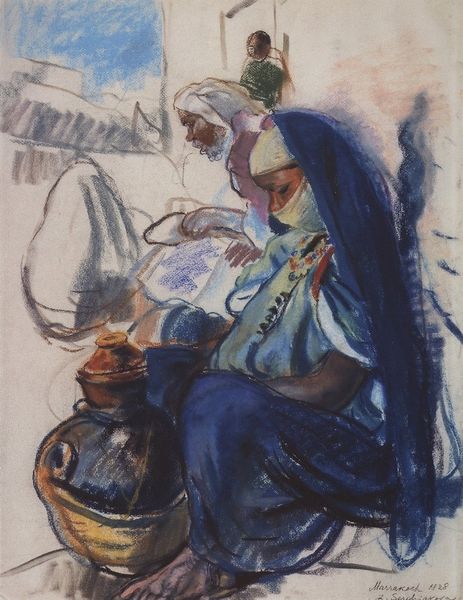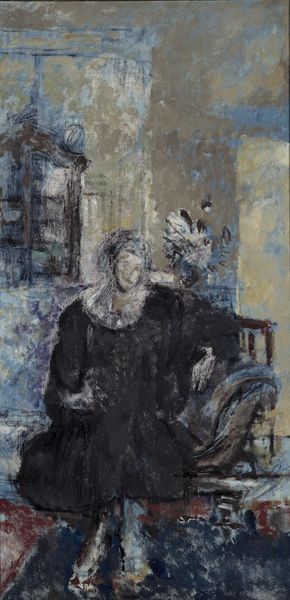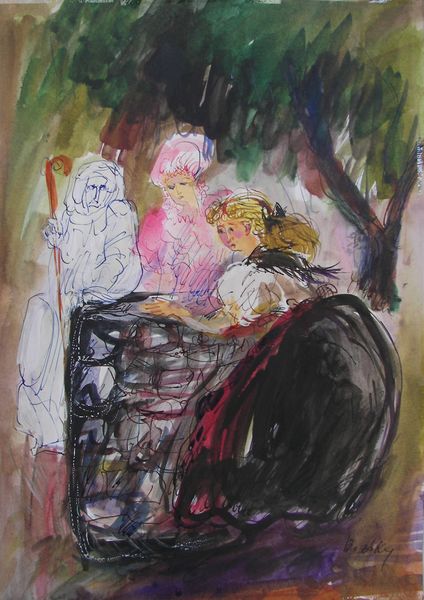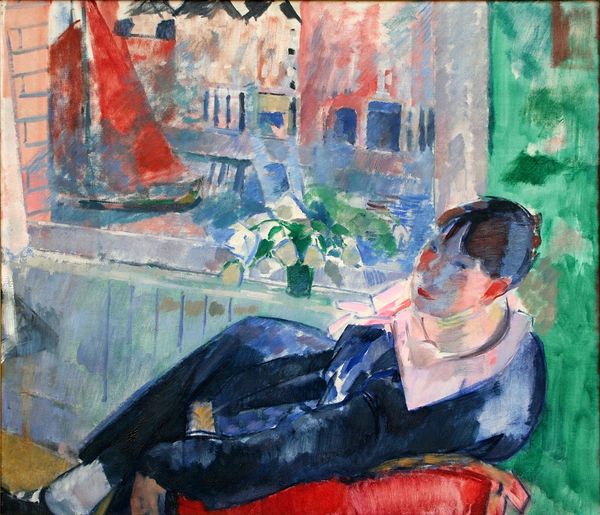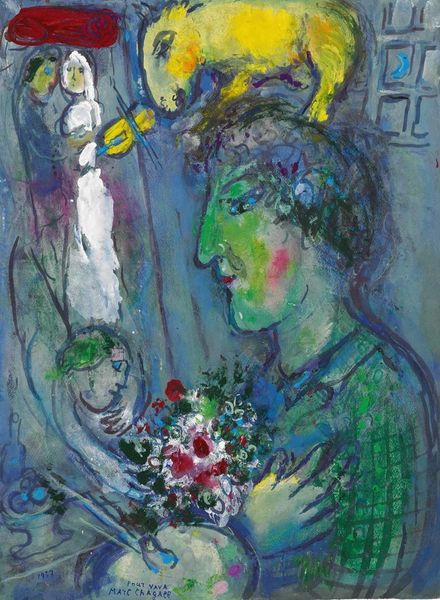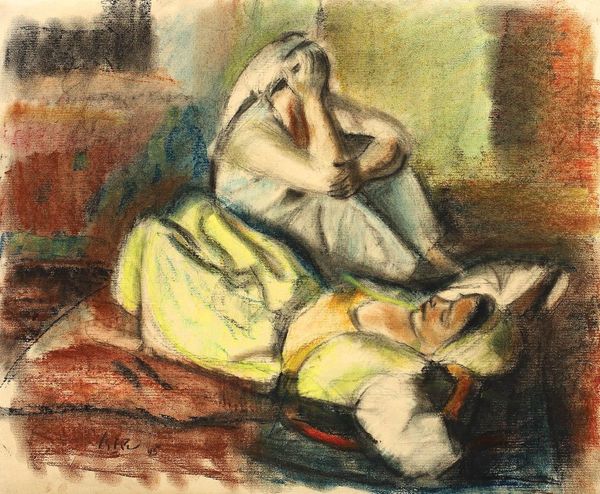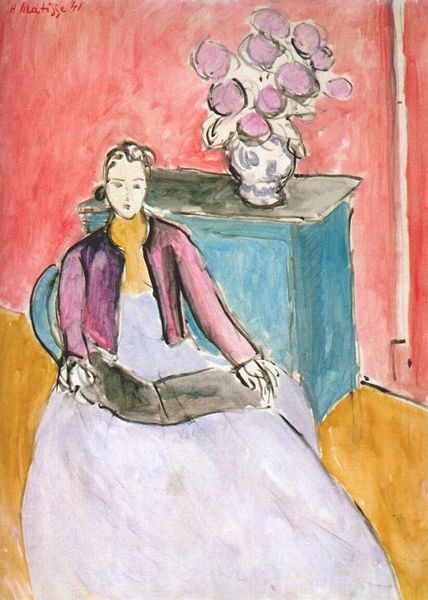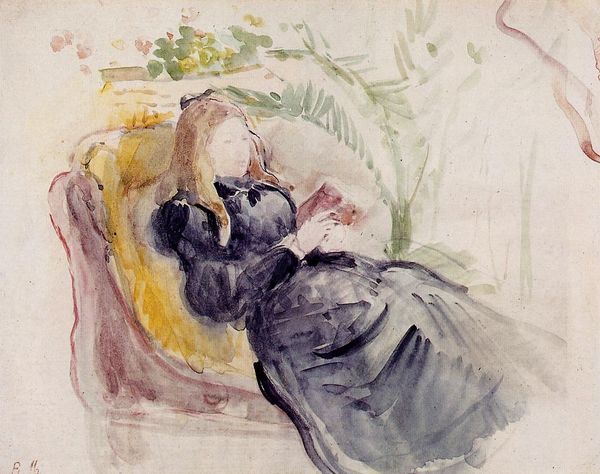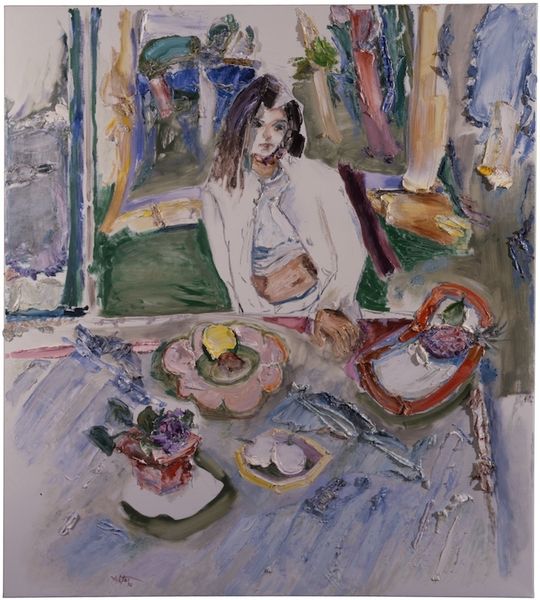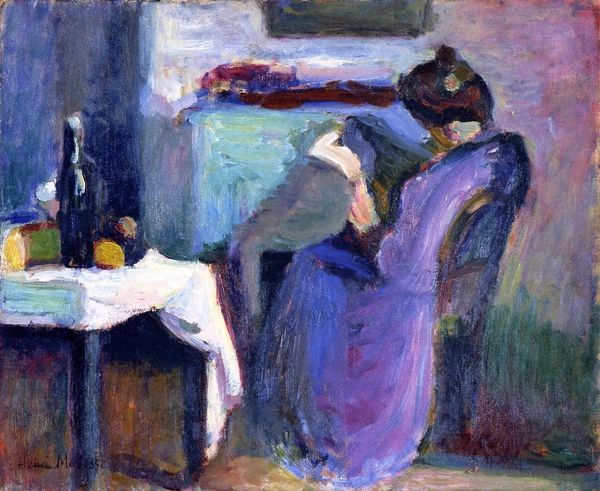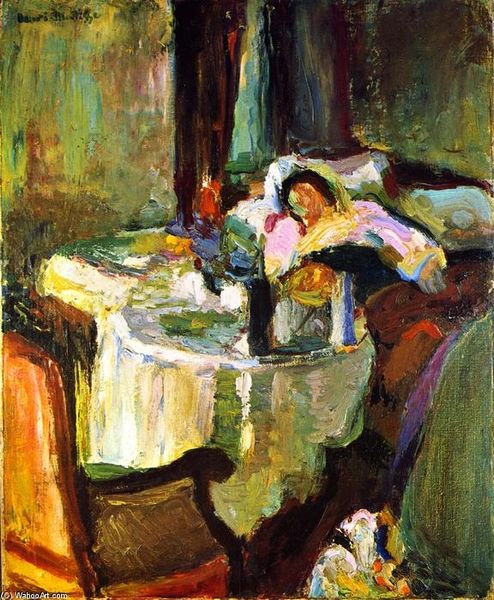
oil-paint, impasto
#
portrait
#
figurative
#
oil-paint
#
figuration
#
oil painting
#
impasto
#
expressionism
#
expressionist
Copyright: Public Domain: Artvee
Curator: Edvard Munch painted "Seated Model on the Couch II" in 1924. The oil paint practically vibrates off the canvas. What's your initial reaction to it? Editor: Restrained intensity. The heavy impasto gives it this palpable sense of contained energy, despite the subdued color palette. It's an internal landscape painted on a figure. Curator: Absolutely. Notice how the figure is positioned in this almost collapsed state, almost as if she's sinking into the furniture, consumed by her inner thoughts? Editor: The color choices add to that impression. The clash between the cool blues and greens of the couch with the purples and reds of her attire is quite striking. There's tension there. Are these color choices symbolic? Curator: Very likely. Red often signals strong emotion – passion or pain. Juxtapose this with the rather cold, muted colors of the surroundings; the entire composition speaks to the tumultuous battle happening within the figure’s inner life. The small table and vase on the side feels symbolic as well, an object representing loneliness, perhaps. Editor: Interesting. To me, the table also anchors the composition. See how Munch balances the asymmetry of the figure on the right with that relatively simple geometric form on the left? The roundedness echoes the shapes in the woman's body, creating harmony as well as visual tension. Curator: Yes, Munch was a master of using those sorts of contrasts to express complex psychological states. Expressionism wasn't just about explosive color; it was about capturing the subtleties of the human spirit in visible form. The model almost appears spectral, rendered in a flurry of painterly brushstrokes. Editor: Precisely. I appreciate the way Munch has handled the paint, too. Each stroke seems loaded with intention. I wouldn't necessarily say that the visual weight on the subject of the piece necessarily needs a symbolic representation; in a painting like this, form and concept work together towards a greater symbolic whole. Curator: Agreed. It’s easy to read the scene through the lens of melancholic symbolism but its visual qualities alone exude this sense of vulnerability. Munch has captured a profound sense of human experience here. Editor: I'd concur. It’s this masterful convergence of aesthetic qualities and psychological insight that gives the work its enduring power.
Comments
No comments
Be the first to comment and join the conversation on the ultimate creative platform.

